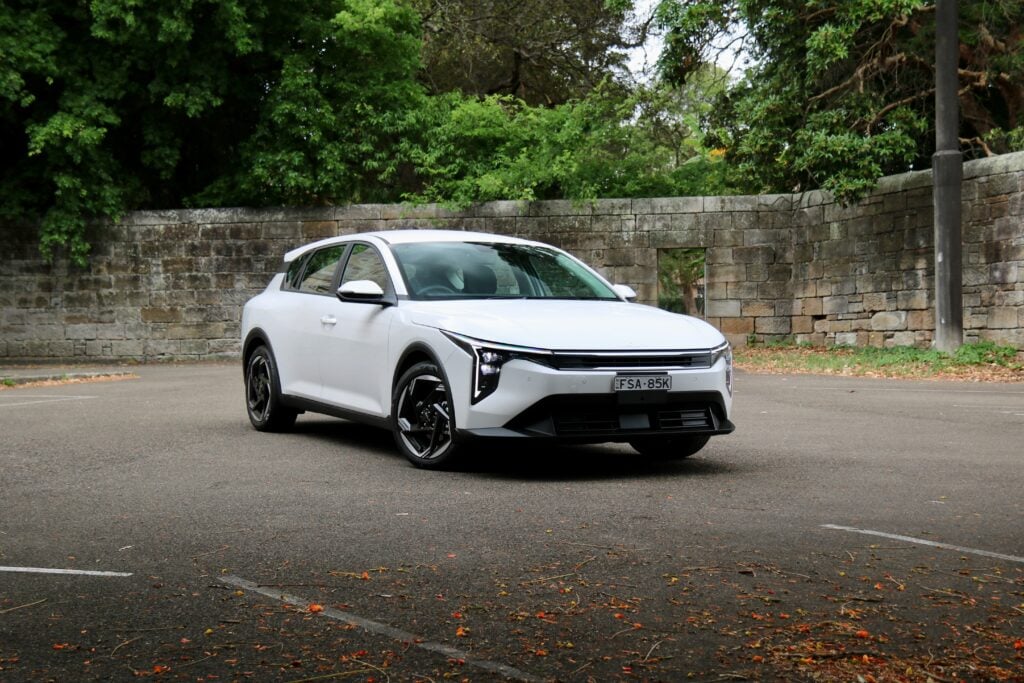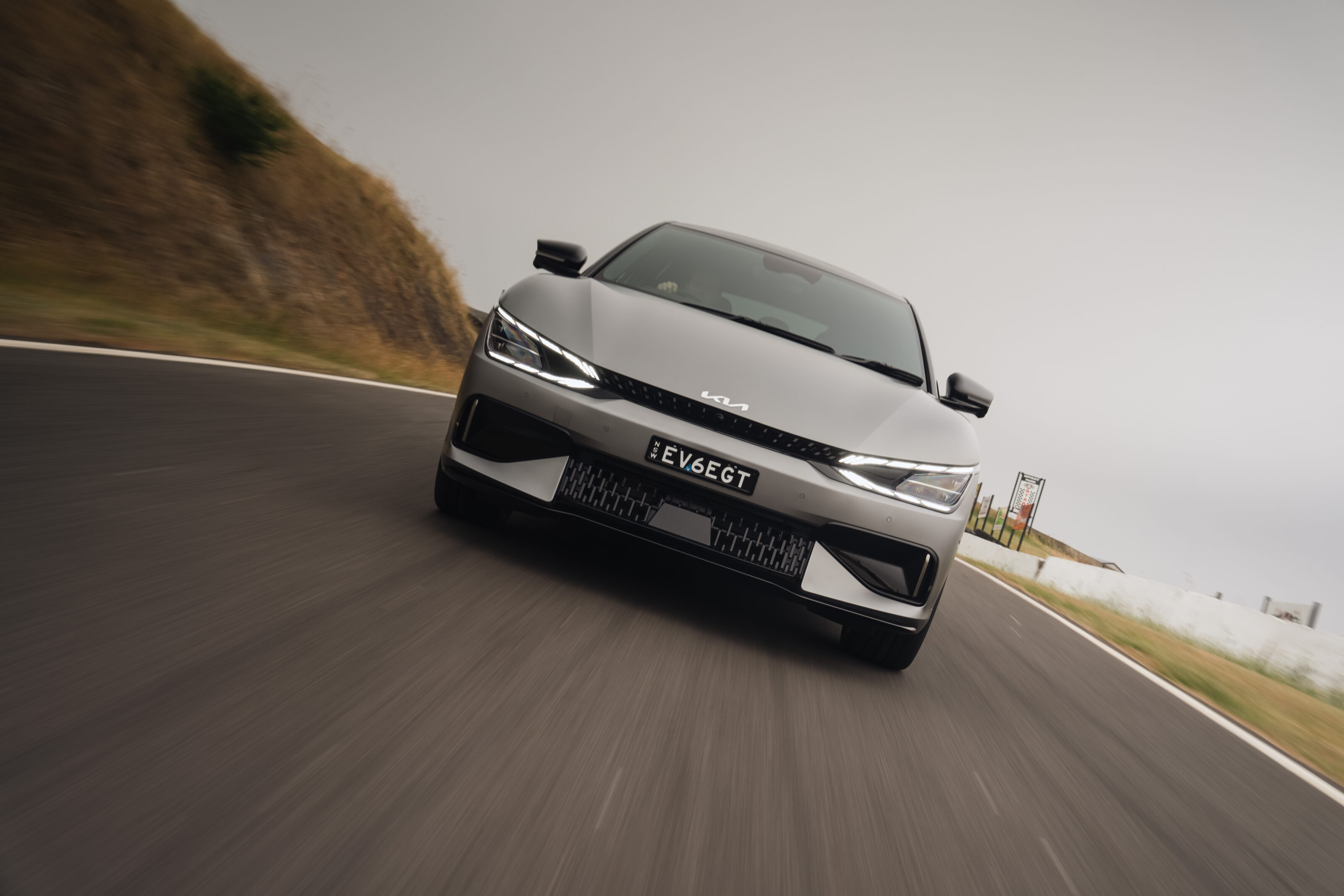
Score breakdown
Things we like
- Realises dynamic potential
- As friendly and comfy as other EV6s
- Generous tech and equipment
Not so much
- Supply is still an issue
- Trades range for speed
- Loses GT-Line seat cooling
The 2023 Kia EV6 GT is the sporting flagship of the South Korean car maker’s Wheels Car of the Year-winning battery electric vehicle, and the most compelling Kia to wear the GT badge yet.
Launching in Australia almost a year after the EV6’s initial debut, the EV6 GT offers less battery range than other EV6 variants but delivers blinding pace and a dynamic appetite far beyond its more pedestrian counterparts.
We’ve not seen a six-figure Kia before, let alone one with over 400kW. More significant, perhaps, than what the EV6 GT is, is what it represents. It feels like a statement of intent, a conscious, decisive step in moving the marque to a more premium position.
UPDATE, March 17: EV6 GT v Tesla Model Y Performance
We’ve now had the chance to throw Kia’s hero EV against the top-shelf Tesla Model Y performance. Which is the best buy for a performance-oriented family? Get the full story at the link below.

JUMP AHEAD
- How much is it, and what do you get?
- How do rivals compare on value?
- Interior comfort, space and storage
- What is it like to drive?
- How safe is it?
- Warranty and running costs
- VERDICT
- Specifications
How much is it, and what do you get?
The Kia EV6 GT swings in at $99,590 (before on-road costs), representing a $12,000 premium over a dual motor, all-wheel drive version of the EV6 GT-Line.
For the money, you get the same 77kWh battery currently available, but here it feeds the GT’s high-performance powertrain comprising two higher-output motors, yielding all-wheel drive as well as torque vectoring and a trick limited-slip rear diff.
That means 430kW and 740Nm in combined output, a 0-100km/h claim of 3.5 seconds, a top speed of 260km/h, and an on-paper cruising range of 424km.
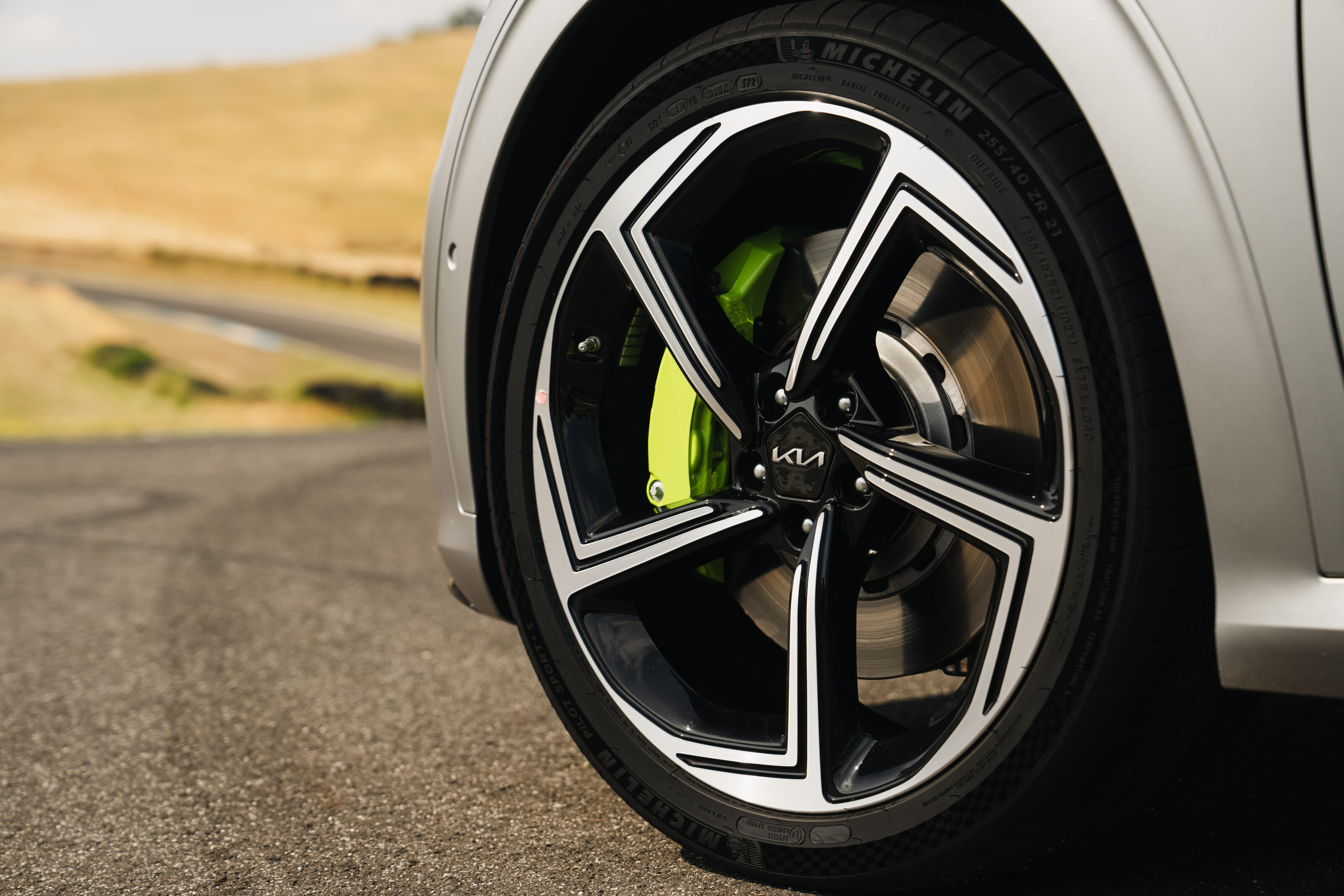
You lose 60km of range from the existing GT-Line’s 484km claim, due to the higher output motors, larger, stickier Michelin Pilot Sport 4 S tyres, and an extra 80kg of mass over the existing GT-Line.
So, there’s less range, but a whole lot more power and dynamism. That can make the EV6 GT hard to place in the minds of buyers. On one hand, there are cheaper EVs that can drive further, though that’s not the brief Kia’s flagship EV6 is looking to fill.
Other than a Tesla Model 3 Performance ($89,900 before on-road costs, claimed 0-100km/h time of 3.3 seconds), it is hard to find a car on sale in Australia that offers an EV6 GT’s level of firepower for the money. The Model Y Performance, slightly cheaper from $94,900, claims 3.7 seconds (though offers a longer claimed range, at 514km).
BMW’s i4 M50 asks a further $30,000, delivering 30kW less. Kia’s star athlete also claims a quicker 0-100km/h time than Porsche’s $197,200 Taycan 4S.
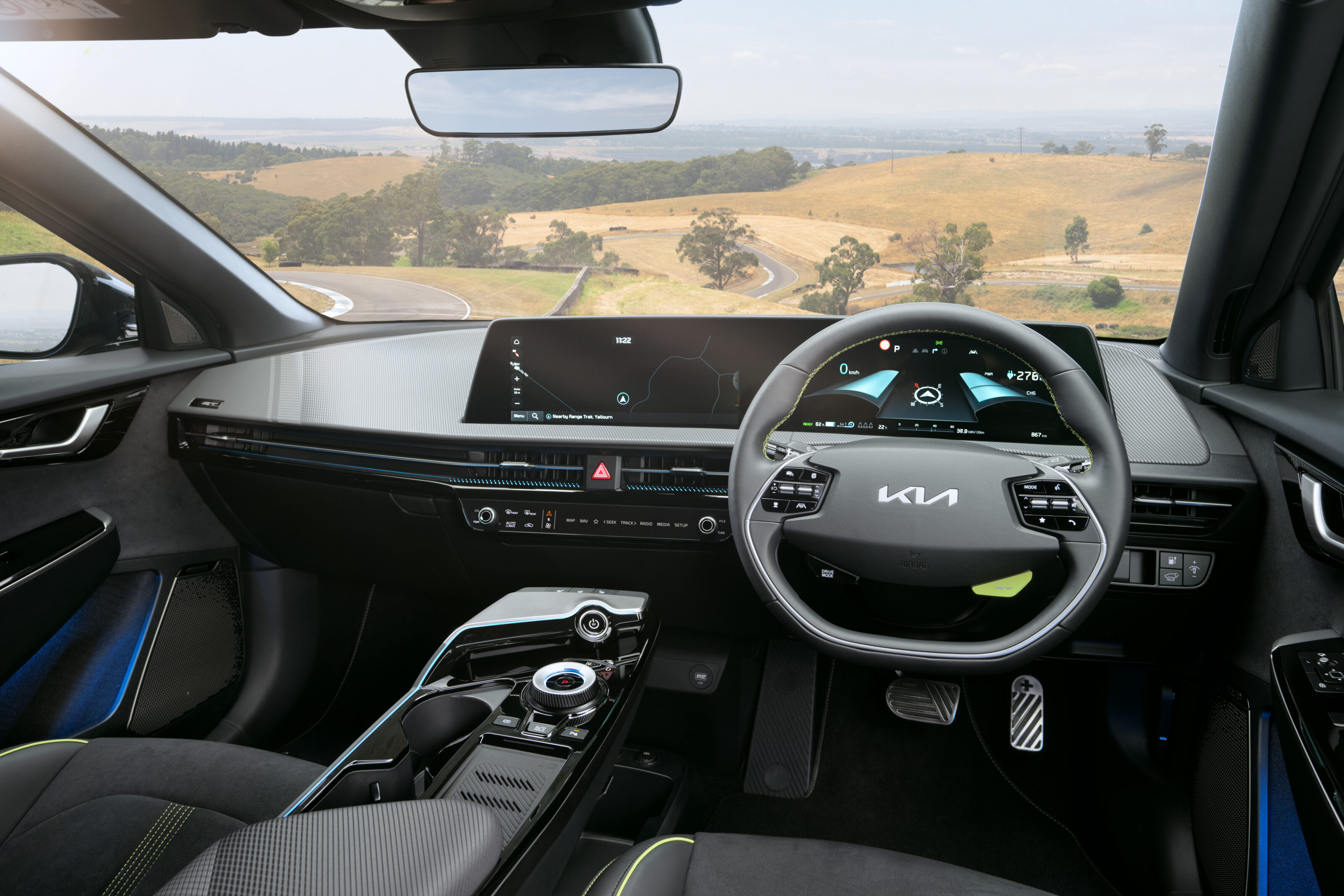
Elsewhere, the EV6 GT comes well equipped, with headline features carried over from the previous flagship GT-Line including dual 12.3-inch widescreens, 14-speaker Meridian stereo, augmented reality head-up display, hands-free powered tailgate, vehicle-to-load capability, panoramic sunroof and a suite of active and passive safety features.
The EV6 GT uniquely gains matrix LED headlights that can selectively block oncoming traffic from its beams, as well as heated sports front seats (cooling function not available at a factory level with these units), artificial leather and suede upholstery, GT-specific bumper trims, green stitching and piping and lime green brake calipers clamping 380mm discs up front and 360mm discs at the rear (EV6 Air and GT-Line utilise 325mm rotors at all four corners).

A new GT Drive mode has been added, with a shortcut button mounted on the steering wheel, coated in the EV6’s signature GT green. This can be thought of as something like the ‘N Mode’ button found in an i30 N, a quick catch-all that switches the vehicle into its most dynamic settings.
How do rivals compare on value?
Once supply to Australia eventually takes off, the Tesla Model Y Performance will likely be the most popular EV6 GT rival and is surely a car that Kia looks on with envy and ambition.
The Model Y Performance asks $94,900 (before on-road costs) and offers 413kW/660Nm and can dash from 0-100km/h in a claimed 3.7 seconds. Its 514km WLTP battery range claim, however, is superior to that of the athletic EV6 GT.

Best Electric Cars, $65k-80k: Australia’s premium EVs tested
In part two of our three price-based EV buying guides, we compare Australia’s electric cars priced between $65,000 and $80,000
Elsewhere, the EV6’s South Korean counterpart, the funky Hyundai Ioniq 5, sharing its E-GMP platform with the EV6, is due to get a high-performance N version. The Ioniq 5 N is expected to launch locally early in 2024, following a global launch later this year.
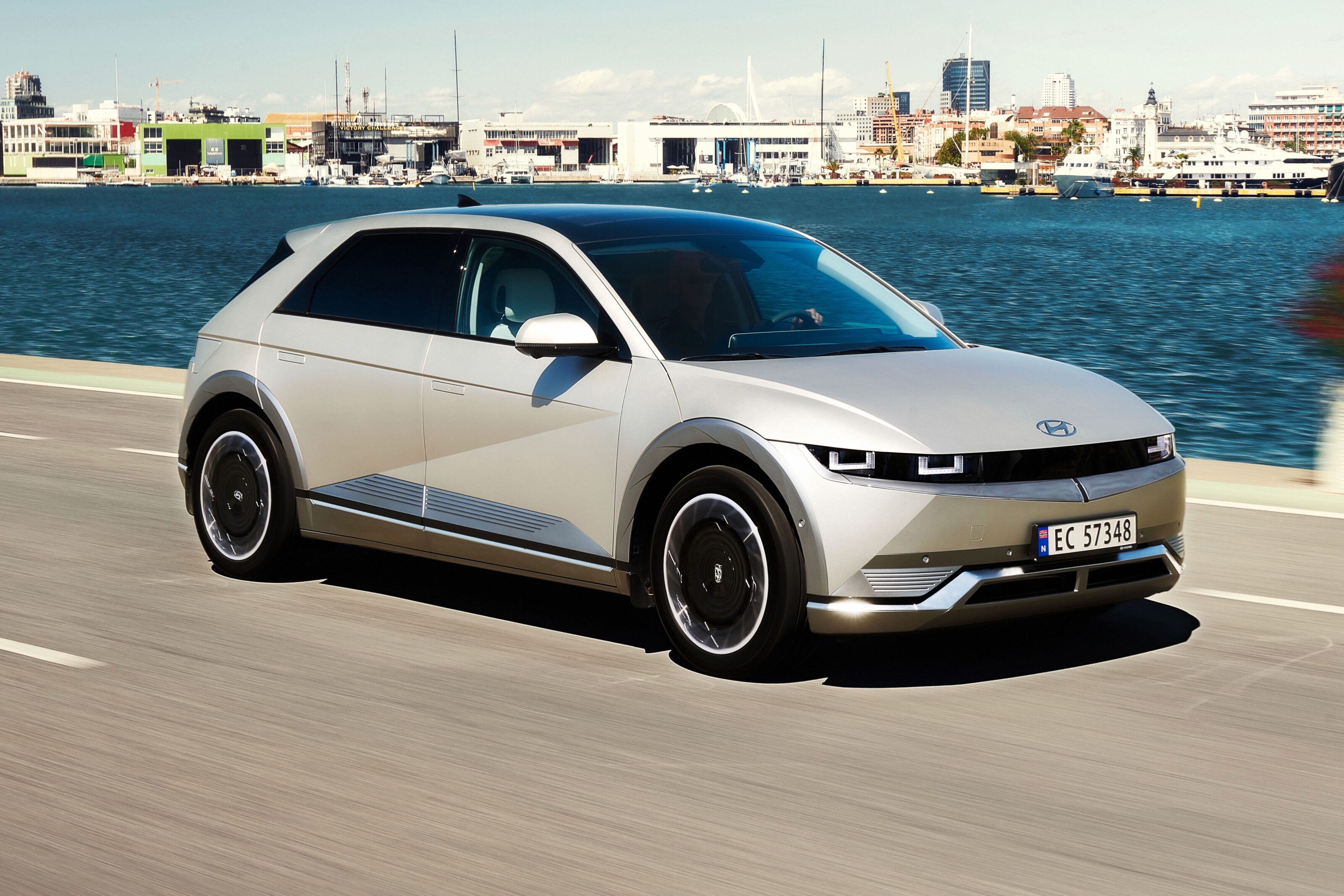
Interior comfort, space and storage
Aside from a number of GT-distinguishing accents, the EV6 GT is virtually identical to the existing EV6 variants. Which is a good thing.
Kia’s take with the EV6’s futuristic interior architecture lacks the lounge-like airiness of the adorable Ioniq 5 and aforementioned Teslas, instead tapping into a decidedly more ‘spaceship cockpit’ feel.
There’s a large solid console structure with loads of storage in the large central bin and a dazzling dual 12.3-inch screen array attracting the initial gaze.
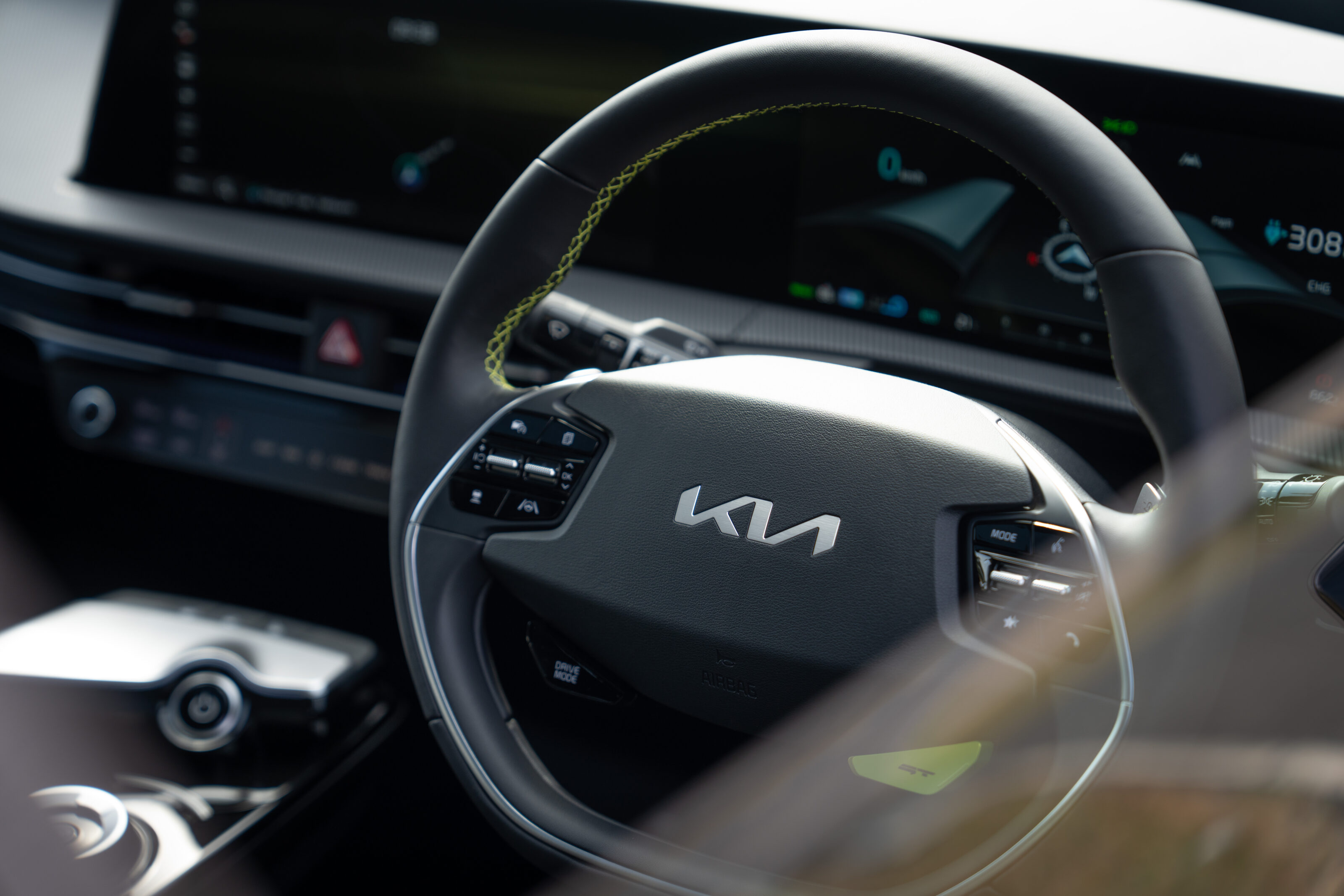
The right-hand screen displays driver and relevant vehicle information (charge state, estimated range etc) while the central touchscreen section handles infotainment needs.
Physical knobs and switchgear are located in a neat stack below the central screen, and can handily switch between climate and media/navigation shortcuts. The toggle is a bit hidden if you don’t know it’s there but, once you do, it’s super intuitive to switch between temperature and volume with the same knob.
A wireless phone charging tray is within easy central reach up front, and the large bottle-sized door pockets are handy.
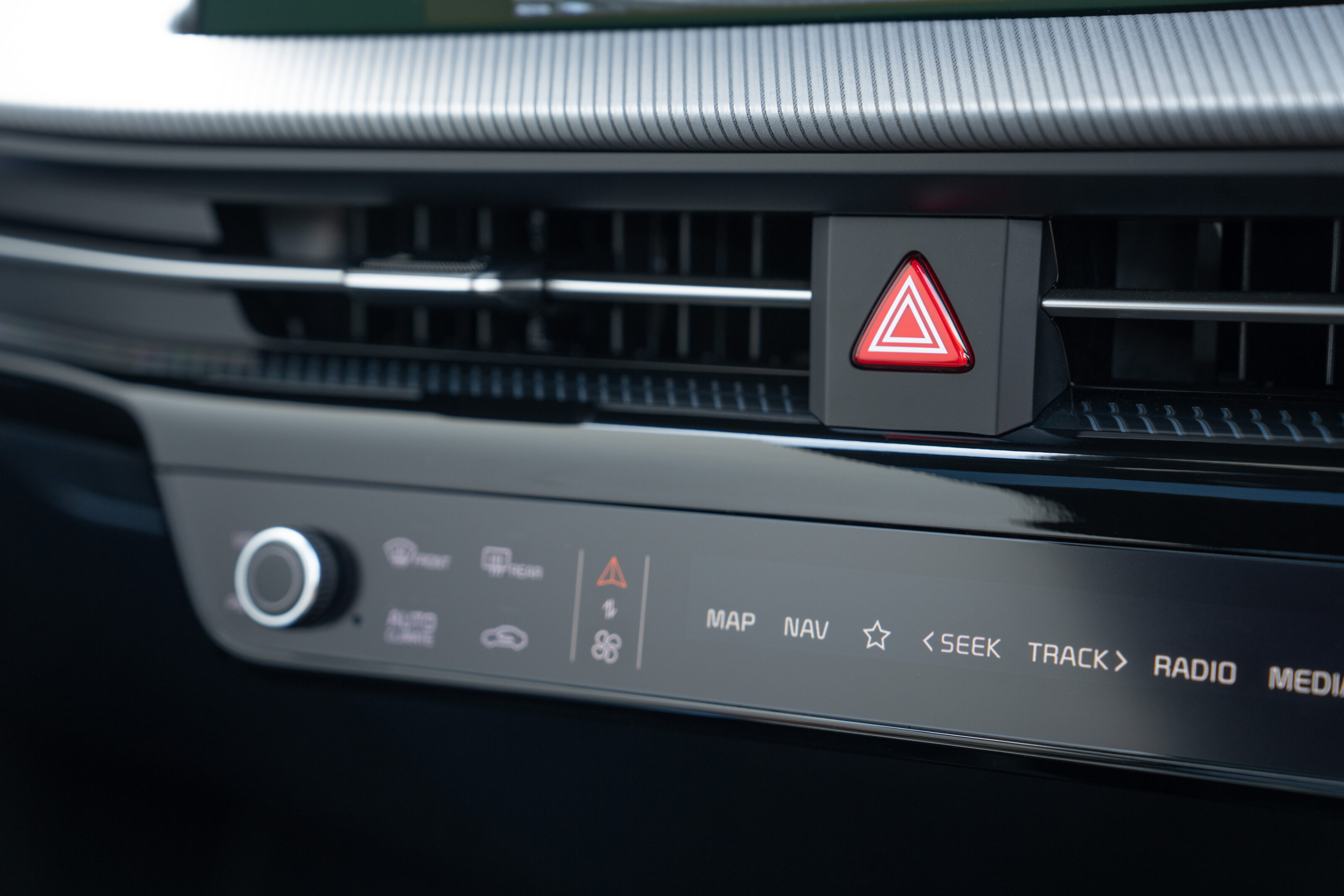
The new sports front seats feel as snazzy as they look, but are manually adjusted, not powered, and lose the GT-Line’s ventilation functions, which isn’t available on this seat type at a global level. Seat heating remains a feature, however.
As with other EV6 variants, the second row is generously spacious thanks to the electric skateboard architecture, with a flat floor and generous amounts of legroom. Forward visibility for rear passengers is slightly hampered by the sculpted front seats, though.
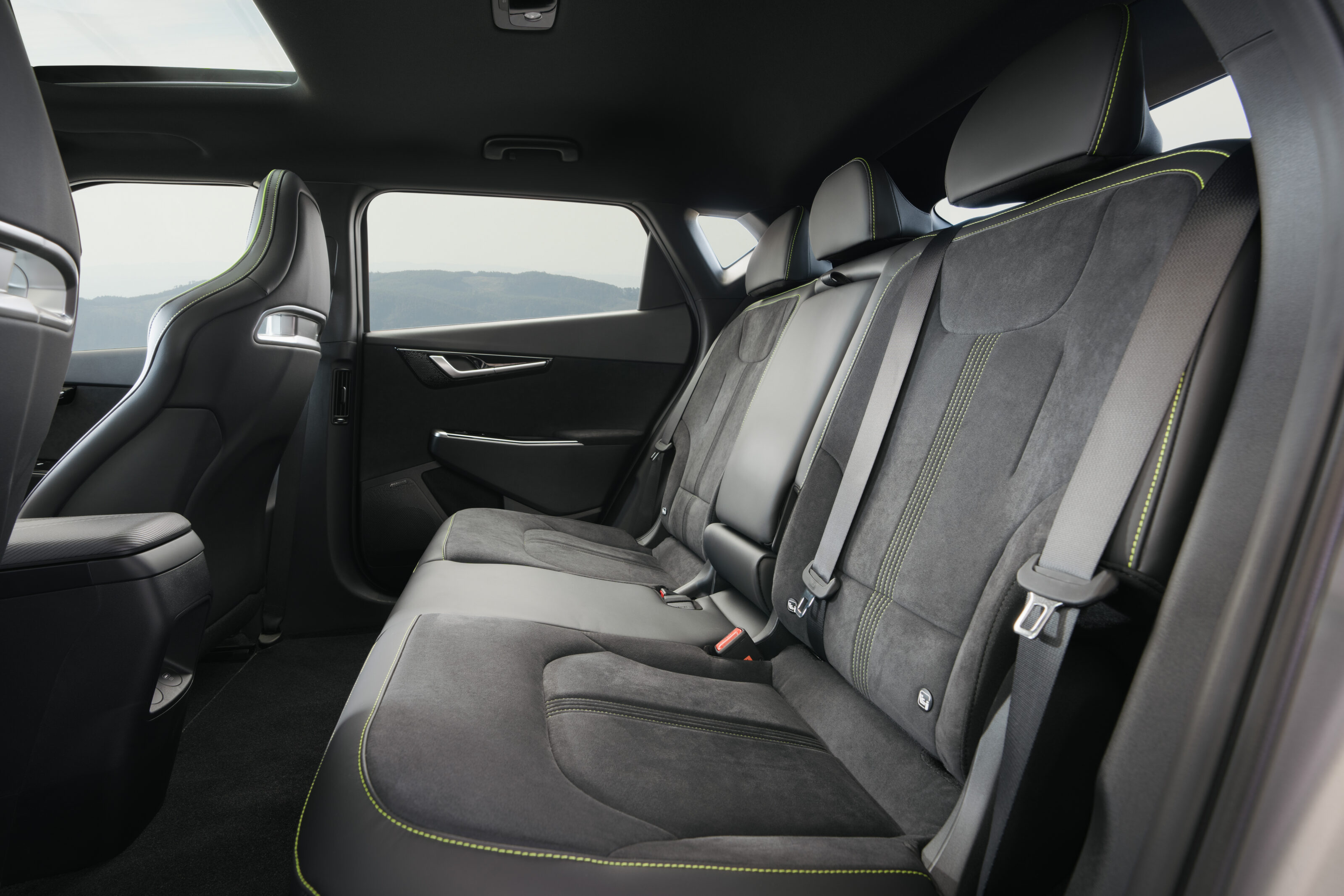
Further back, the boot measures a claimed 480 litres with the second row in place. This is down 10 litres from the entry-level EV6 Air, due to a subwoofer included in the 14-speaker Meridian stereo suite. A small ‘frunk’ measuring 20 litres makes up the difference and then some.
Fold the second row, however, and stowage capacity swells to an impressive 1260 litres.
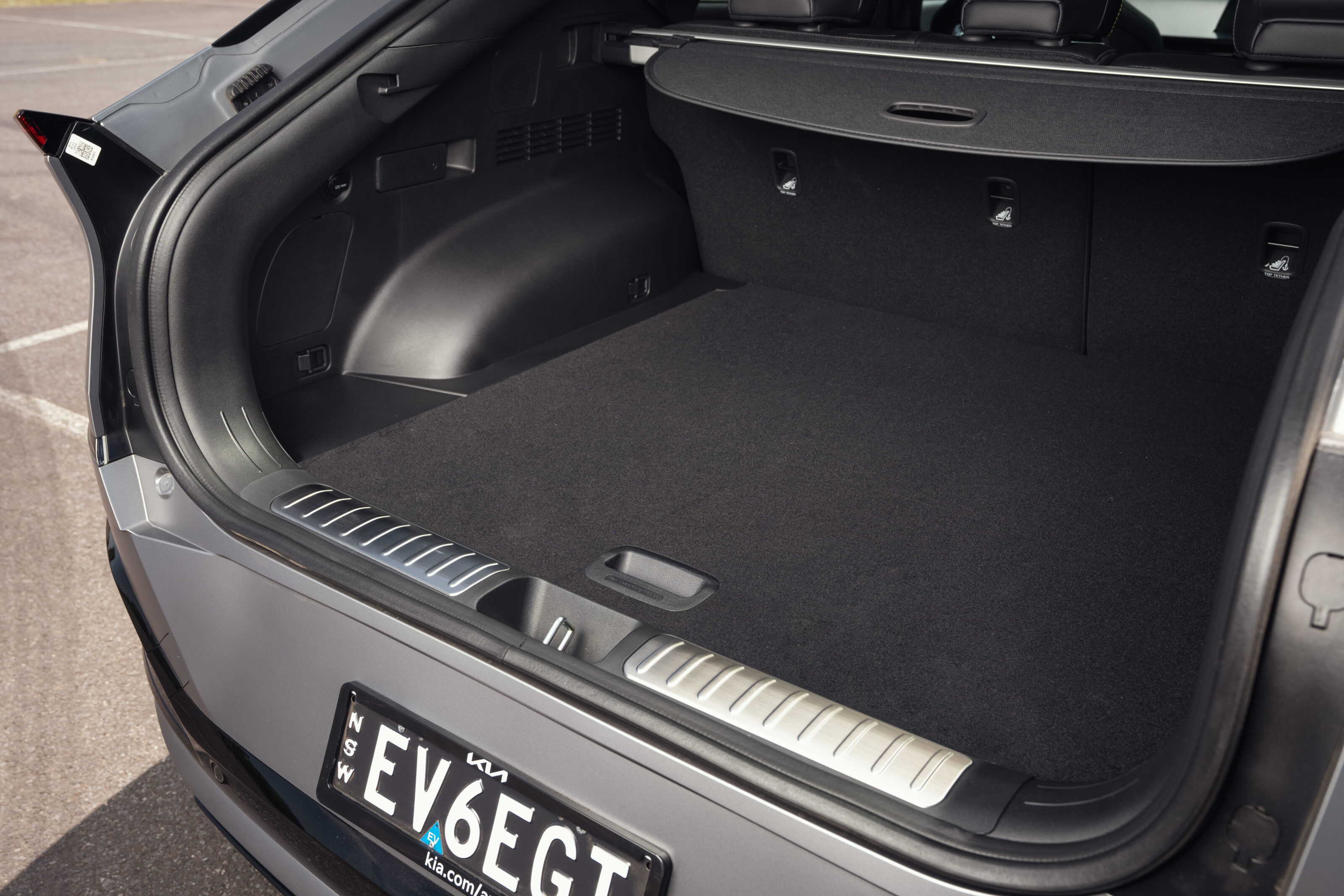
What is it like to drive?
| Kia EV6 GT figures | |
|---|---|
| Battery size | 77kWh |
| Drive | dual-motor all-wheel |
| Power | 430kW |
| Torque | 740Nm |
| Driving range | 424km |
| 0-100km/h | 3.5sec (claimed) |
| Charging speed | up to 350kW DC |
| Charging time 10-80% | 18min DC |
In the same way that the EV6 GT builds upon existing variants in other areas, the driving experience doesn’t feel far removed from existing EV6 dual-motor GT-Line variants in normal urban driving scenarios.
You can notice the step change in pace, certainly. While even the dual-motor GT-Line lacks the dazzling lightswitch ‘head-smack’ acceleration typical of many EVs, the GT’s more powerful motors and stickier rubber see the new variant deserving of its position as the range’s sporting flagship.
There are more expensive EVs, from more esteemed brands, that the EV6 will absolutely pants at the traffic lights.

Despite increased bracing in the front strut tops and under the rear boot floor, along with a revised double ball joint front suspension assembly, the sporty EV6 GT hasn’t lost any of its daily driving abilities, with impressive levels and bandwidth and scope throughout the speed envelope.
Localised electronic suspension maps, along with a unique variable steering ratio, makes the EV6 GT feel right at home on Australian roads and it impresses with deft body control regardless of speed.
On slower urban roads, body control is cushy yet composed. You can feel its weight as it drops into potholes or hops up over a jut but excess body movements are quickly contained.
At speed, things are even more impressive, wafting over small ripples and handling larger road imperfections better than any 2620kg car rolling on 21-inch alloys ought to.
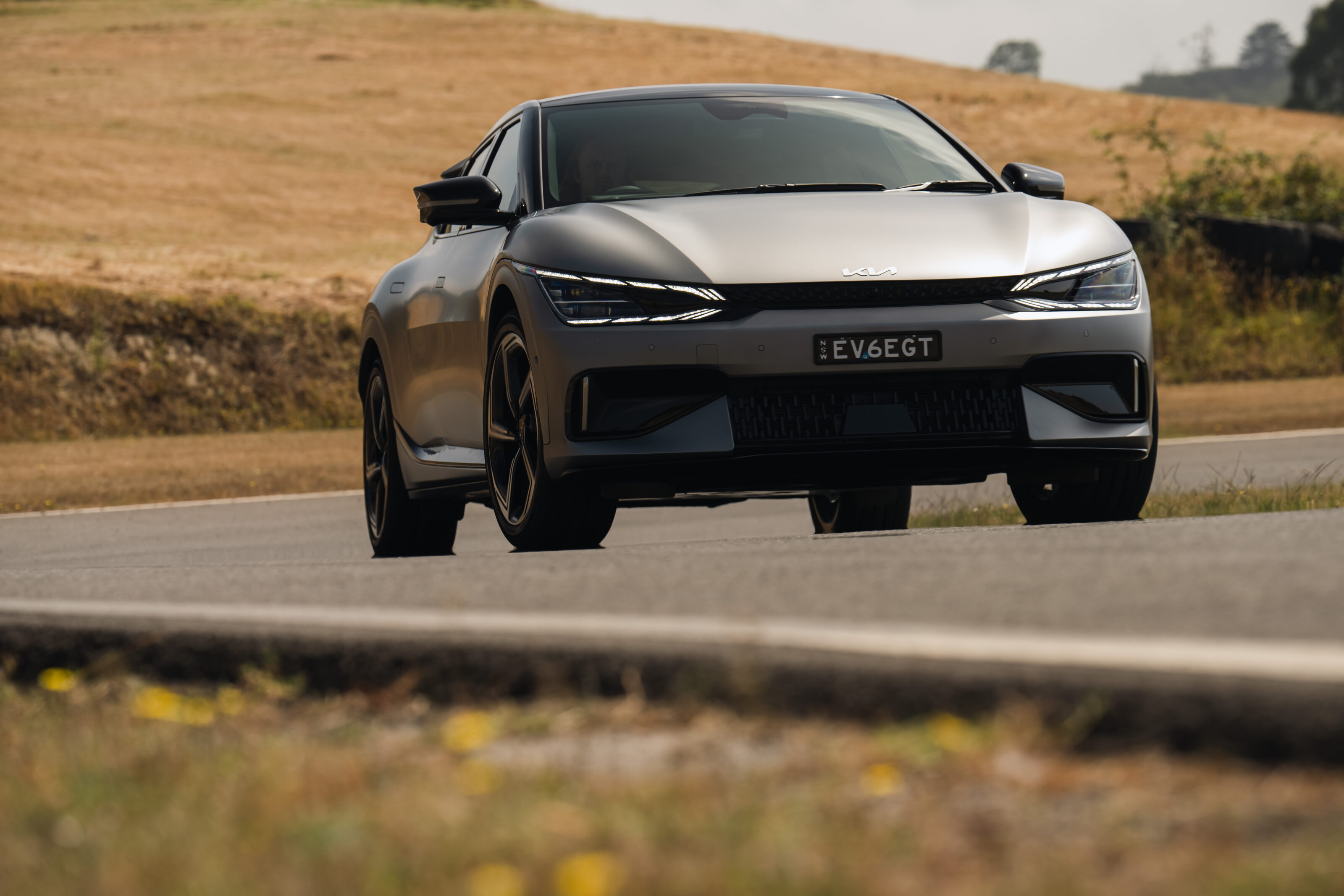
When the launch route transitions away from Victoria’s 110km/h highways into smaller tree-lined back-roads, it feels like an opportune time to test out the new GT driving mode, a handy catch-all setting for when the going gets twisty.
Throttle mapping is sharpened further than the existing Sport mode, with consistent throttle input resulting in a slow but noticeable surge ahead when switching between drive modes.
GT mode also flicks the rear electronic limited-slip diff and torque vectoring management into their most dynamic setting, delivering crisp and decisive direction changes at speed, and the ability to throttle-on shockingly early in the mid-corner-exit phase throughout tight-radius hairpins.
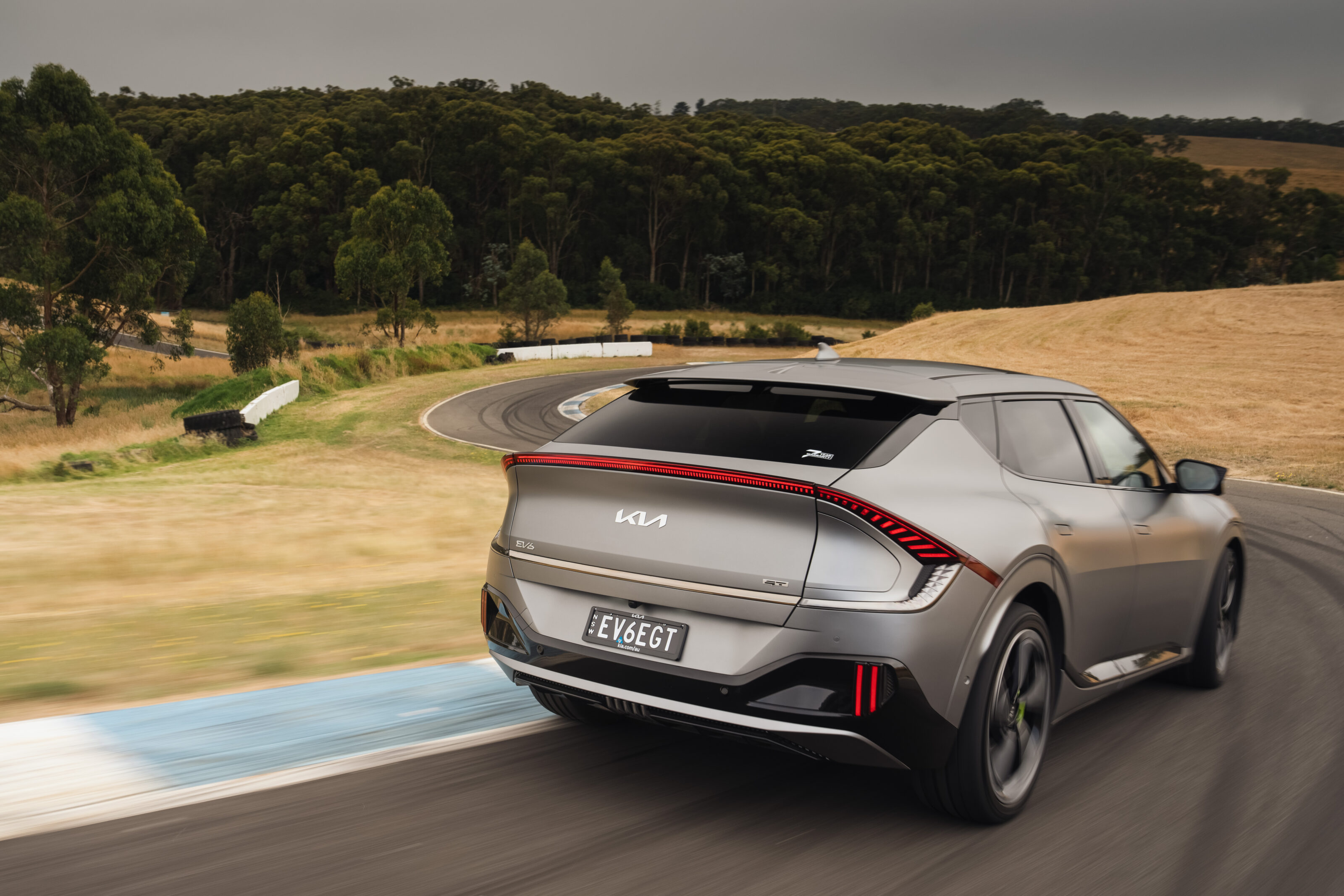
Through flowing corners, the EV6 GT disguises its weight via its low centre of mass, composed direction changes and sheer ease of pace. The driver, however, is sharply reminded of its weight under heavy braking on corner entry, where pedal modulation – and its interplay with assistance from the configurable regenerative braking – is hard to nail down.
So far the EV6 has impressed, but its greatest challenge lies ahead as we are destined for Bryant Park, also known as Haunted Hills; a hyper-technical and fearfully small, hillclimb track about 3.5 hours out of Melbourne.
For those familiar with this environment, a 2.5-tonne electric SUV with more than 400kW is possibly the most outmatched vehicle that comes to mind.
Again, the EV6 GT’s dynamic poise shines through.
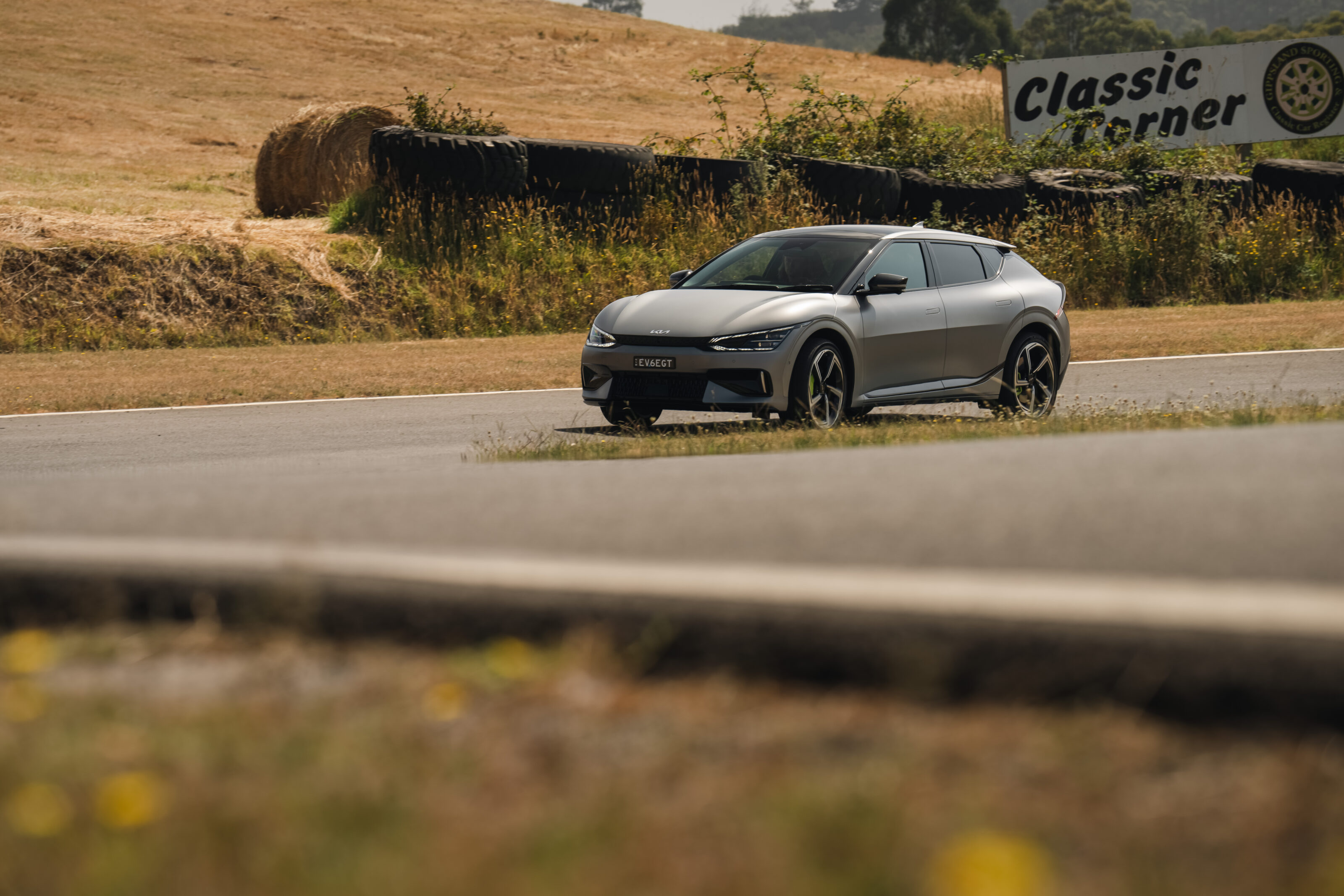
The first few laps were conducted in Sport mode, to get the eye in and to form a basis for comparison.
Here, the car retains a safe understeer bias, with an engaged ESC system and torque-vectoring-by-brake working hard to keep the car neat and tidy.
GT Mode slackens the ESC system and also sharpens the e-LSD and torque vectoring management calibration, encouraging chassis movement and delivering an exhilarating playfulness over crests as the rear end becomes temporarily unloaded.
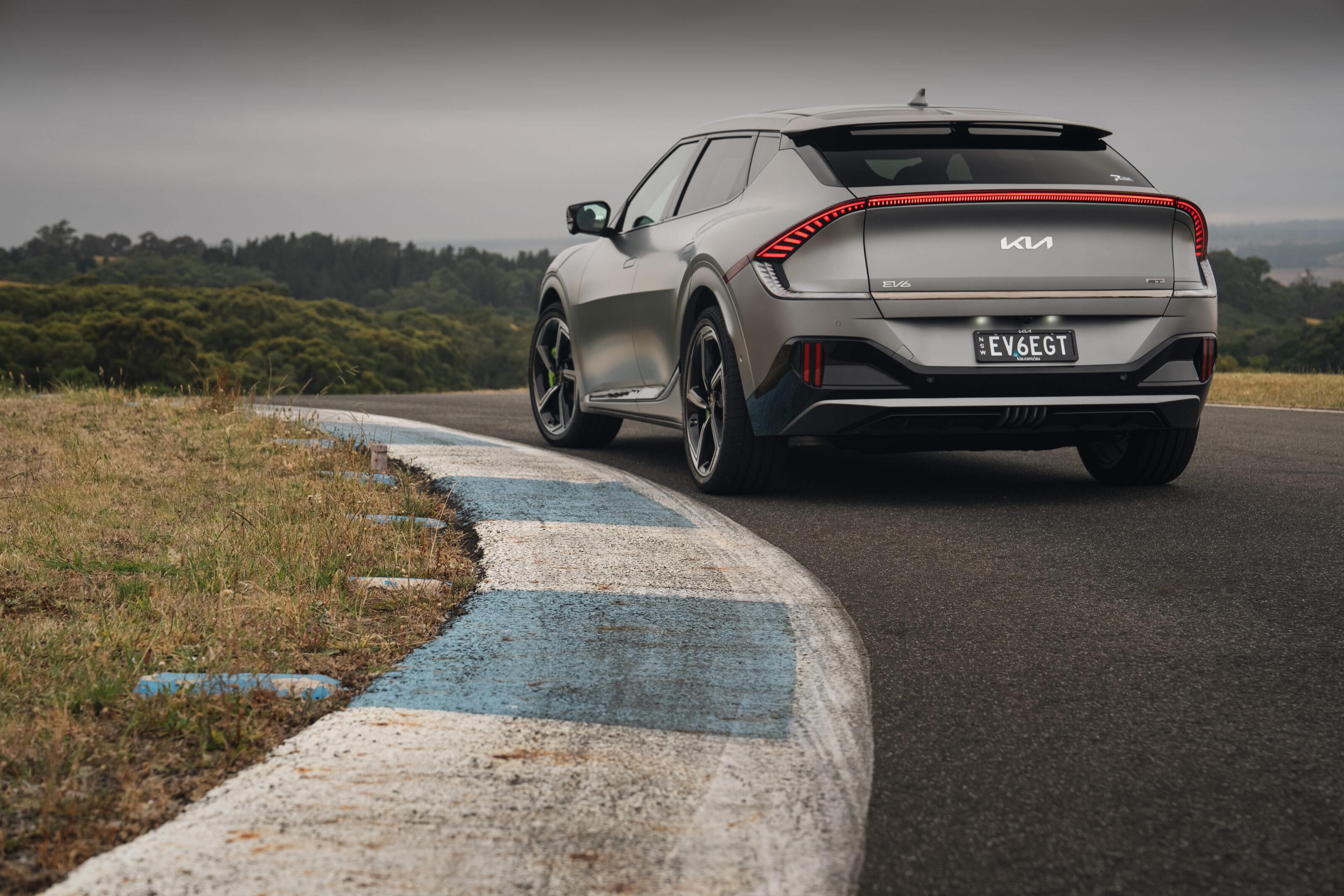
The front end feels more deliberate and alert in GT Mode, you can power down shockingly early and, in this setting, the GT feels eager to rotate in a way EV6s haven’t before.
We must also make mention of Drift Mode, which sadly wasn’t tested on the launch program, but can send up to 100 per cent of torque to the rear wheels and progressively feeds power to the front axles as the steering returns to centre.
How safe is it?
The Kia EV6 GT, specifically, is currently unrated by ANCAP, as the fitment of the GT’s new sports seats requires re-homologation and testing.
However, the EV6 GT bears all the same safety features as the rest of the range, which was awarded five stars in 2022.
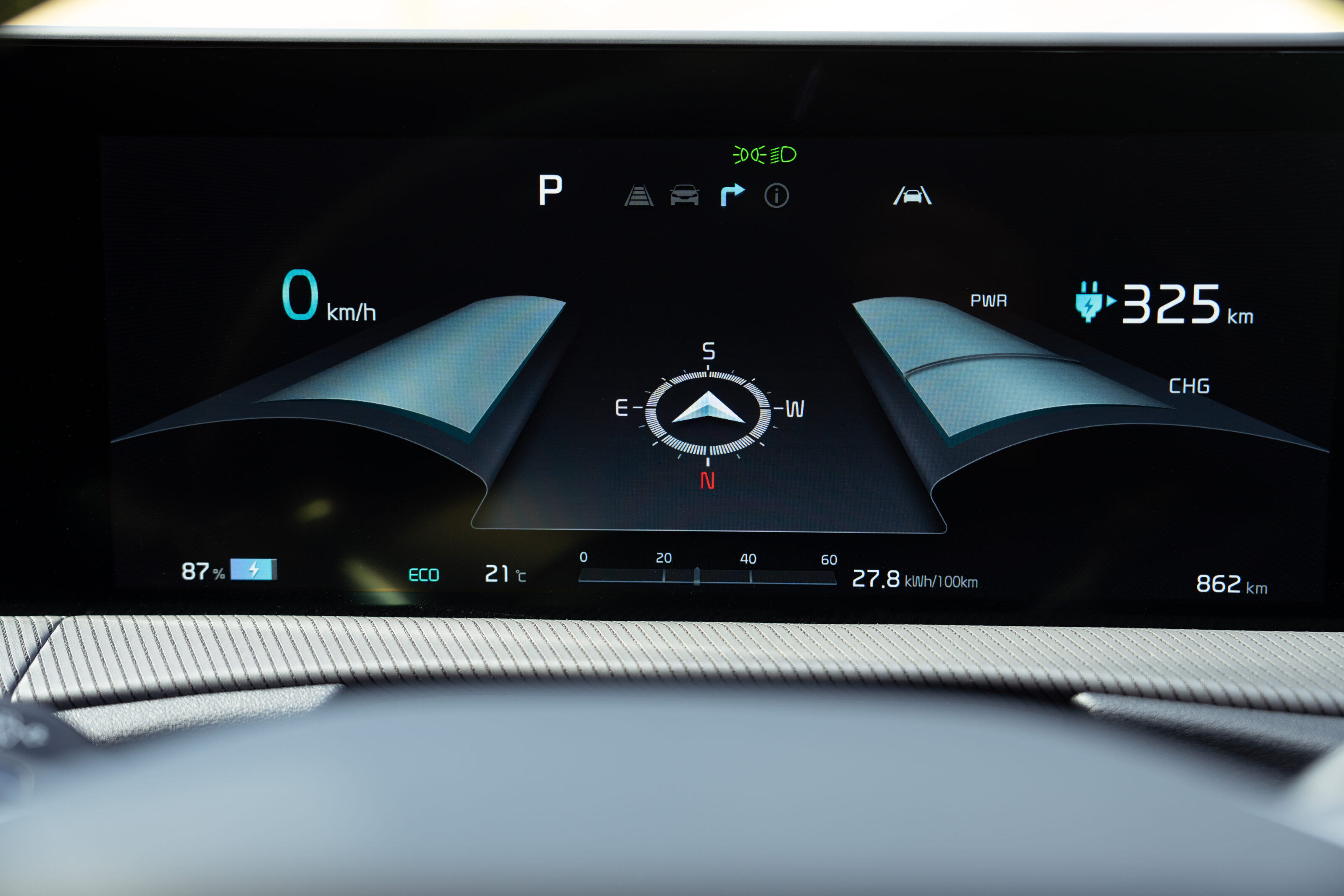
The Kia EV6 GT is equipped with dual frontal, side chest-protecting and side head-protecting (curtain) airbags, as well as a front central airbag.
Active safety features include auto emergency braking with junction assist, blind-spot monitoring, rear cross-traffic alert, lane-keep assist and lane following assist, multi-collision braking, intelligent speed limit assist, tyre pressure monitoring, front and rear parking sensors, smart cruise control with stop-and-go function, 3D camera views and more.
Warranty and running costs
The 2023 Kia EV6 GT is covered by Kia’s seven-year, unlimited-kilometre vehicle warranty, with service intervals running every 12 months or 15,000km, whichever occurs first.
Kia offers three different pre-paid service plans for the EV6 GT: a three-year plan for $733, a five-year plan for $1371 or a seven-year plan for $2013.

Servicing the GT is a bit pricier than EV6 Air and GT-Line variants, which Kia says is due to the GT’s performance brakes being slightly more laborious to maintain compared to standard items.
The EV6’s 800-volt architecture enables the 77kWh battery to charge from 10-80 per cent in a claimed 18 minutes using a 350kW ultra-fast DC charger, or in a little over an hour when using a 50kW charger.
VERDICT
Kia’s new EV6 GT raises the bar, not just for the EV6 range, but for Kia as a brand.
It retains the same affable solidity, balance and composure as the existing EV6 while realising a dynamic potential that we always felt lurked beneath the surface but had, until now, remained untapped.
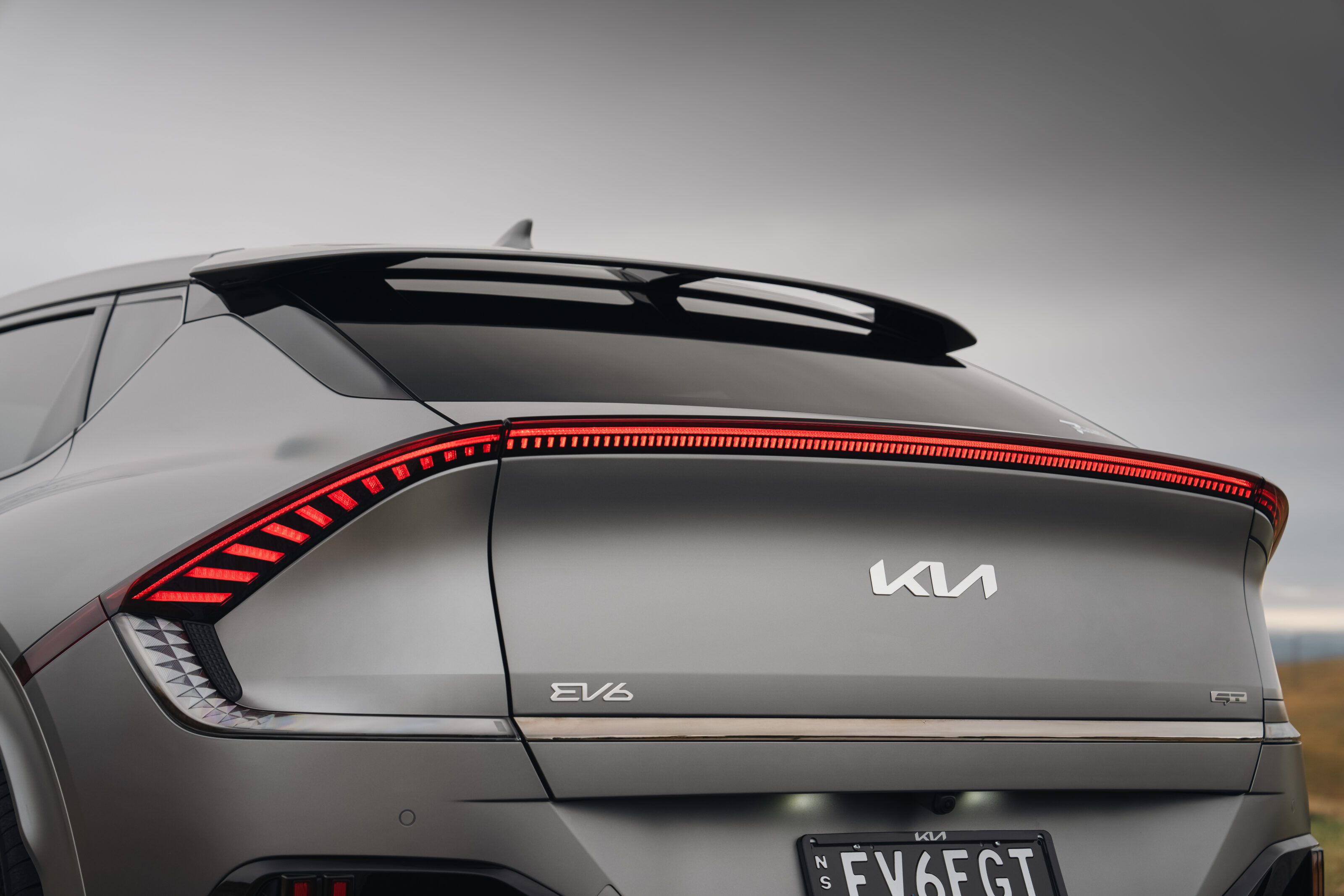
The burning question is if $100,000 is too much for a Kia.
I don’t think that’s an issue here. Not because – or in spite of – what the car is, but more importantly because of what it can do.
Kia’s EV6 GT is a supremely talented thing, and if dynamic driving forms part of your remit, this car will do things even its talented siblings can’t, and that’s a lot.
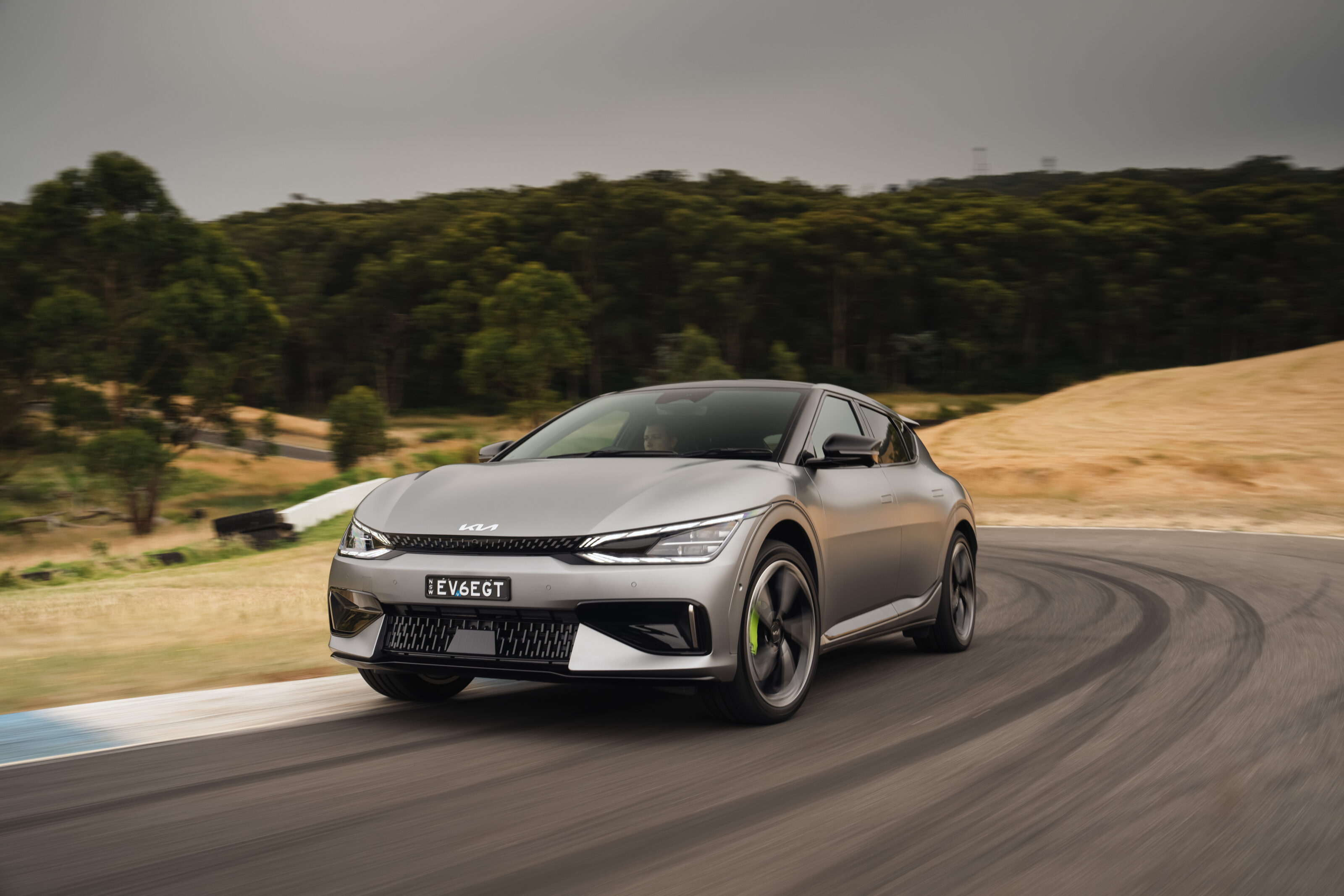
Specifications
| Kia EV6 GT specifications | |
|---|---|
| Body | 5-door, 5-seat large SUV |
| Boot min / max | 480L / 1260L |
| Drive | all-wheel |
| Powertrain | 77kWh battery; 160kW motor (f), 270kW motor (r) |
| Max power | 430kW |
| Max torque | 740Nm |
| Transmission | single-speed reduction |
| Weight | 2185kg |
| L/W/H/W-B (mm) | 4695/1890/1545/2900 |
| 0-100km/h | 3.5sec (claimed) |
| Price | $99,950 + on-road costs |
| On sale | now |
Score breakdown
Things we like
- Realises dynamic potential
- As friendly and comfy as other EV6s
- Generous tech and equipment
Not so much
- Supply is still an issue
- Trades range for speed
- Loses GT-Line seat cooling
We recommend
-
 News
News2022 Kia EV6: Pricing increased, base model now over $70,000
All variants of the Car of the Year-winning EV have gone up by $4600
-
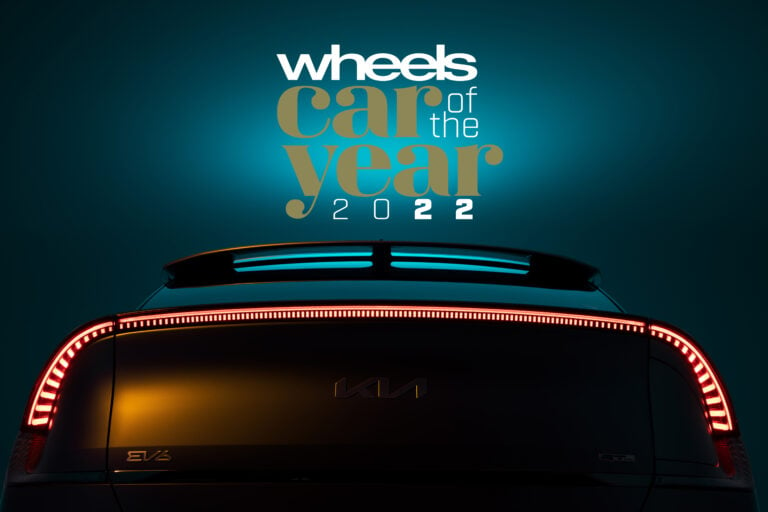 COTY
COTYThe Kia EV6 is the 2022 Wheels Car of the Year
Our COTY 2022 winner is a landmark model that stands as the exclamation point in its brand’s coming-of-age story
-
 News
NewsNew car calendar 2026: All the new cars coming to Australia next year
Here’s the WhichCar by Wheels guide to all the new cars that will launch in Australia in 2026. Check back in regularly for updates...




